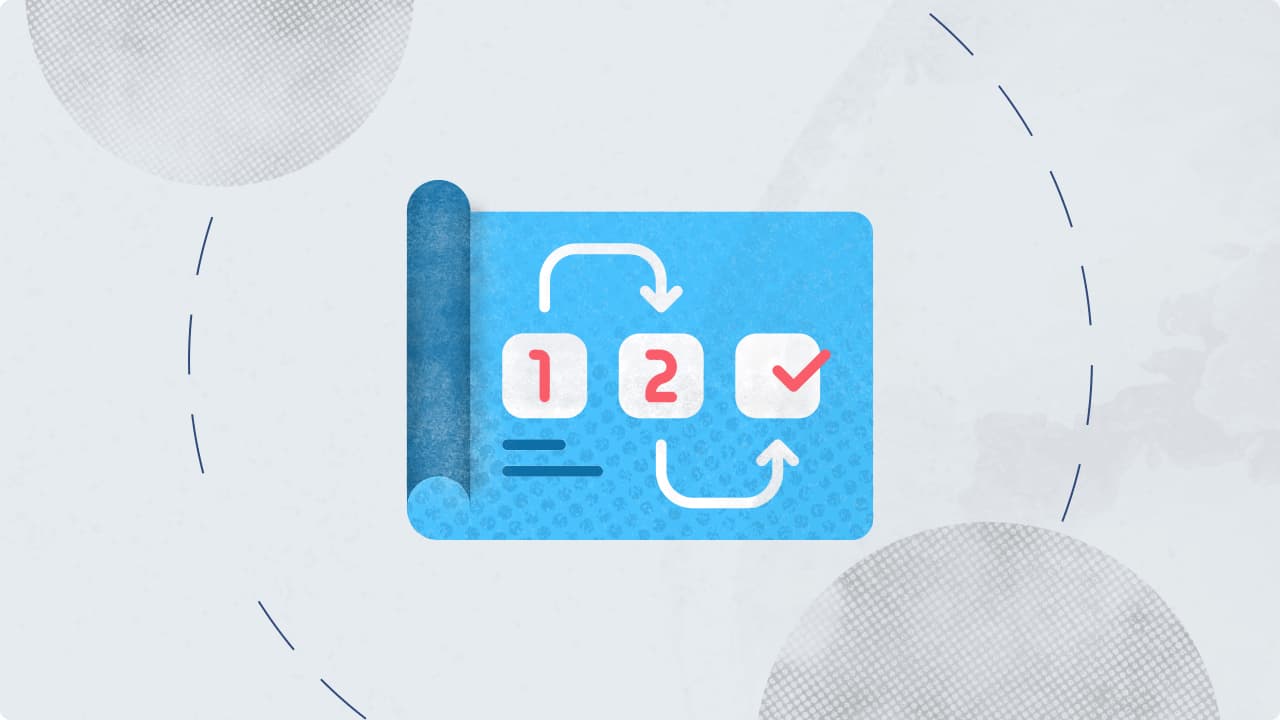Consumers of products and services are spread over the internet and use social media, blogs, online communities, forums, and websites to express their experiences towards a brand. When the name of a company or a product is mentioned in a social media post, blog, or any other form of content, it is referred to as brand mention.
But the chances are that you are not completely aware of what your consumers feel about your product because you are not monitoring all your brand mentions from social media and other sources. Even if you are doing brand monitoring on social media, it could just be scraping the surface of a huge ocean of social media.
Businesses have understood that there is a great value in brand monitoring discussions about their products and services online. But how exactly do you start monitoring your brand mentions? That's what you will get to know at the end of this blog. Let's start!
- What Is Brand Monitoring?
- Why Is Brand Monitoring Important?
- Best Practices For Brand Monitoring
- How To Conduct Online Brand Monitoring?
- Conclusion
You can directly jump to a section of your choice or keep scrolling.
What Is Brand Monitoring?
A business analysis technique that involves monitoring various channels for any mention of a brand is known as brand monitoring. You will get an idea of what people think about you and your brand on various channels. Building awareness & effective brand management is the key to successful brand monitoring. It can help you deal with any potential reputation crisis or criticism before things get out of hand.
Here are some channels from which you can gather what people are saying about your brand and its products:
- Social networks, such as Facebook, Instagram, Twitter, LinkedIn, YouTube, Snapchat, and TikTok
- Blogs and articles
- Web forums
- Offline media platforms such as television, newspapers, and magazines
- Review sites such as Yelp, Google Reviews, Tripadvisor, and Trustpilot
- Broadcast media

Image Source: Twitter
Why Is Brand Monitoring Important?
Not responding to customer complaints or inquiries can increase customer churn by 15%, according to statistics. Therefore, public opinion and your reaction to their feedback play a huge role in brand strengthening. Here are the major benefits of brand monitoring important for effective brand management:
Create Customer-oriented Products
You should not expect your customers to adapt to whatever product you make. Instead, it has to be the other way round. Your customers require you to come up with solutions that are best for them. They comment and share their opinion about a brand's products on social networks. They keep sharing what they like about the product, what they didn't like, and what they expect from the brand.
Brand monitoring helps you find those comments and opinions and create your product or change it according to the customers' needs. The different ways to track brand benefits are:
- Strategy development
- Tracking product requirements
- Searching for new target markets
- Knowing the needs of your customers
- Close monitoring of product performance

Image Source: Twitter
Strengthen The Marketing Strategy
Marketers have been demanding to be as focused & as relevant as possible in recent times. And customer information is vital for this purpose. Effective marketing involves analyzing customer demographics, sentiment, their likes, and dislikes for your brand.
Social listening is the perfect way to gain some of these insights about your customers. Remember the following to conduct helpful brand monitoring:
- Define your target audience
- Listen carefully to your customers
- Track the channels where customers talk about your brand
- Follow market trends
- Track your ad campaigns
- Look for influencers
Building Reputation & Cisis Management
Brand monitoring helps you maintain a good reputation for your brand. It allows you to solve user problems to avoid a negative impact on your brand. Listening to the reviews and feedback of your customers on the Internet and developing a strategic response and problem-solving process will instantly increase your audience's confidence in your brand. In doing so, you will prove that your customers' opinion about your brand is important to you.

Image Source: Twitter
Identification & Elimination Of Deficiencies
The most effective businesses understand the importance of feedback. They listen carefully to their customers. Brand monitoring is needed to obtain feedback that may require changes to your products.
This way, you will collect useful information & also measure customer satisfaction. Focus on creating an effective feedback mechanism to receive timely & honest feedback from your customer.

Image Source: Twitter
Customer Retention & Satisfaction
Ineffective brand management and attracting customers are only half the battle. Maintaining customer satisfaction & loyalty is equally important to earning a steady income.
Evaluating users requires you to listen, respond, and provide support to them, which can be achieved through brand monitoring. You can increase the social listening effectiveness through:
- Tracking customer requests on social networks
- Tracking social media channels from one place
- Evaluating customer reviews
- Identifying customers at risk
- Planing ways to respond to customer complaints
Increasing Brand Sales
The development of customer-oriented products and efficient customer service will make the brand monitoring process more convenient for you. Your products will speak for themselves, and the sales will bring profit. Use brand monitoring to generate leads and increase sales in the following manner:
- Track and identify sales opportunities
- Interact and communicate with customers
- Find potential resellers
- Develop effective marketing strategies to lure in more customers

Image Source: Twitter
How To Conduct Online Brand Monitoring?
Here's a 7 steps framework to set up the process of online brand monitoring:
Step 1: What Will You Monitor?
Just following the mentions of your brand name online is a highly inefficient approach for brand monitoring. If you are looking for long-term success, you must also consider other areas. Your audience will not always talk about your brand directly on different channels. You need to read between the lines as well.
Chances are that general conversations about your industry and around your brand will have a secondary impact on your business. Thus, during brand monitoring, businesses should track the following points:
- Name Variations: Prepare a list of all the names that people associate with your brand, including account names & blog names related to your brand. You should also keep track of similar products and popular campaign names around similar products to stay up to date.
- Industry Buzzwords & Industry Trends: Track buzzwords and trends in your industry. This can be a good source of inspiration for creating exciting content & finding new ways to participate in public discussion.
- Brand Mentions: Ensure that you know when people are talking about your brand and its products, as it is an essential part of brand monitoring. This way, you will not miss a lot of direct and indirect mentions.
- Competitor Analysis: Analyzing your competitors will establish a benchmark for evaluating your performance against similar brands in the same industry, helping you stay updated with the latest trends.

Step 2: Who Are Your Stakeholders?
This step is essential since you want to know who has a stake in your online reputation. Your stakeholders could be your customers, influencers, competitors, investors, employees, business partners, bloggers, or journalists writing extensively on your competitors or industry happenings.
It is critical to know who's saying what about your brand, and it's equally important to know who is listening to these people and keeping track of them. You should keep all such stakeholders under your radar in the process of brand monitoring.
Step 3: What Are Your Goals?
Brand monitoring should be done with specific goals in mind. Here are some probable goals used commonly for brand monitoring:
- To track the success of the launch
- To check if there are any reputation attacks
- Just to listen to customer feedback & identify satisfied or unhappy customers
- Identify the influencers in your industry to build rapport with them for your brand building
- To monitor the actions of your competitors

Step 4: What Are Your Specific Needs?
Brainstorm and specify your needs clearly about brand monitoring. With the vastness of social media and information on the internet, it can be very cumbersome if you try to monitor all the sources of information, and you might not be able to get the most appropriate results. Hence, list down the sources that should be monitored.
Decide on the type of analysis required. Do you want an in-depth report about insights and analysis of your brand mentions? Will you be doing it manually or using a tool to perform the brand monitoring? How much budget do you want to allocate?
With clarity around these questions, you can narrow down on your brand's specific needs.
Step 5: How Do You Want To Monitor Your Brand Mentions?
By this step, most of the stages relating to preparation are completed. And so now it's time to think about how to actually do it. There are two ways in which you can do it:
-
Manual brand monitoring: You can conduct a manual brand monitoring process by going through the social media pages of your brand, your competitors & other influencers in your domain. You can also browse community forums and blogs to find out if people are talking about your brand. However, this can become very cumbersome since it requires huge time & effort from your side.
-
Using brand monitoring tools: Brand monitoring tools offer broader monitoring features like deep analysis and reports. Tools such as Statusbrew can be used by social media managers to track and monitor audience activities on Twitter.
Statusbrew's Brand Keywords feature allows you to know how people are reacting to your brand, product, or a popular topic beyond your social feed. You can search for hashtags, keywords, and brands to uncover trends, analyze sentiment, and respond quickly in real-time on Twitter.
Know more about Best Practices For Setting Up Competitor Keywords In Statusbrew

Step 6: Who Will Monitor?
Brand monitoring needs to be conducted on a regular basis and hence needs to be assigned to a team member who can do it responsibly.
A social media manager can be a good fit here since they are focused on social media marketing and hence understands the need for brand monitoring.

Step 7: How Are You Going To React To The Brand Mentions?
This is the final stage, yet one of the most important steps of brand monitoring. Now that you have defined the goals, channels, people to monitor, budget, and brand monitoring tools, it is time to act upon the results derived from these actions.
By now, you must have found the content that talks about your brand, you have a list of customer reviews and complaints relating to your brand, and you know how your competitors are being discussed on social media. Now you should decide what you will do with this data.

Image Source: Twitter
You can listen to the brand mentions & understand what the pain point of your customers is? What do they wish to see in your product? What are their complaints? What is making them like your competitor's products better than yours?
Now go back and discuss how many of these can be changed and improved with your team members. Before you promise or respond to the comments, ensure that you know that you will meet those expectations.
This is a golden opportunity to make improvements to your products based on your customer feedback. Hence, you should try and implement as many changes as possible. You should also convey to your customers when the changes are completed. This indicates that you are loyal to your customers and are listening to their feedback.

Image Source: Twitter
Best Practices For Brand Monitoring
You should know the strategies to make the best use of your brand monitoring tools. This is why we are going to discuss how you can use them in the right way to get the ball rolling:
Be Aware Of Negative Mentions
Positive mentions are always good to achieve. However, it doesn't demand a quick reply always. On the other hand, negative comments need a quick response before they can do much damage to your brand's reputation online. So it's essential that you set up alerts for negative brand mentions and react quickly with the necessary solutions.
Negative mentions can include your product or brand's name along with a specific issue. Therefore, you can combine your product or brand name with the keywords such as "problem" or "issue" to find out negative mentions.

Image Source: Twitter
Decide When To Be Silent
One of the most crucial lessons to learn about brand monitoring is that not every mention is worth your attention and energy. You will get tons of valuable feedback and genuine complaints from your audience. However, there may be an equal amount of audience complaining about nothing specific and trying to stir some drama online.
Also, some issues may be too sensitive to respond to. You need to identify these conversations and brand mentions and understand which ones you should engage with & which ones you should leave alone.
Be Alert With Your Next Plan
Monitoring your brand mentions on social media isn't enough; you also should have a clear idea of what to do with the results obtained. Do you want to reply to positive comments or only react to them? Do you want to provide solutions to customer complaints in an open place? Or you want to make an attempt to resolve it in private.
You should prepare this plan along with your team members so that all of them can respond to your audience in a synchronized way.

Image Source: Twitter
Learn Lessons From Your Competitors
Your competitors will teach you a lot about brand engagement and customer service, whether through their successes or failures. Hence, ensure you monitor your competitors well and analyze their strategies to see what works for them and what doesn't.
It's highly likely that you and your competitors share a similar audience base. Hence, find out what their customers like and dislike about them. Try to convert your competitor's weakness into your strength. Don't feel shy to keep an eye on what people are saying about your competitors, as they might also be monitoring you in the same way.
Conclusion
Reputation is important, but online reputation is a factor that can make or break your business.
Building a reputation is as essential as building a brand requiring dedicated efforts over a long period of time. You need to constantly prove to your audience that they can lay their trust in your brand. This can be done when you regularly watch the feedback and comments from customers.
Brand monitoring is the answer to building and maintaining a healthy brand name. Brand monitoring helps grow happier clients, build brand loyalty and help you to have a competitive advantage.
Looking for a social analytics tool to track the performance of your marketing campaign? Try Statusbrew. With several ready-to-use reporting templates and total flexibility to customize these reports, Statusbrew will help you determine whether your social initiatives have led to positive results and where adjustments are needed to strengthen your marketing campaigns - in no time.
Statusbrew is an all in one social media management tool that supports Facebook, Instagram, Twitter, Linkedin, YouTube, and even Google My Business.




Explore the Statusbrew range of social media tools
Cancel anytime!